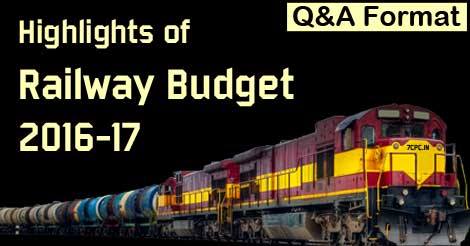Expected DA July 2016 – AICPIN For February 2016

Consumer Price Index for Industrial Workers (CPI-IW) – February, 2016
The All-India CPI-IW for February, 2016 decreased by 2 points and pegged at 267 (two hundred and sixty seven). On 1-month percentage change, it decreased by (-) 0.74 per cent between January, 2016 and February, 2016 when compared with the decrease of (-) 0.39 per cent between the same two months a year ago.
The maximum downward pressure to the change in current index came from Food group contributing, (-) 2.21 percentage points to the total change. At item level, Rice, Arhar Dal. Masur Dal, Moong Dal, Urd Dal, Groundnut Oil, Mustard Oil, Poultry (Chicken), Eggs (Hen), Garlic, Onion, Vegetable and Fruit items, Flower/Flower Garlands, etc. are responsible for the decrease in index. However, this decrease was checked by Wheat and Wheat Atta, Fish Fresh, Goat Meat, Milk, Tea (Readymade), Sugar, Cigarette, Tailoring Charges, etc., putting upward pressure on the index.
The year-on-year inflation measured by monthly CPI-IW stood at 5.53 per cent tbr February, 2016 as compared to 5.91 per cent for the previous month and 6.30 per cent during the corresponding month of the previous year. Similarly, the Food inflation stood at 6.18 per cent against 7.61 per cent of the previous month and 7.42 per cent during the corresponding month of the previous year.
At centre level, Giridih reported the maximum decrease of 8 points followed by Madurai, Tiruchirapally, Munger-Jamalpur and Bengaluru (7 points each) and Sholapur. Mundakkayam and Belgaum (6 points each). Among others. 5 points decrease was observed in 3 centres, 4 points in 8 centres, 3 points in another 8 centres. 2 points in 14 centres and 1 point in 10 centres. On the contrary, Quilon recorded a maximum increase of 5 points followed by Mysore and Rajkot (3 points each) and Kodarma (2 points). Among others, 1 point increase was observed in 9 centres. Rest or the 14 centres’ indices remained stationary.
The indices of 34 centres are above All-India Index and other 44 centres’ indices are below national average.
The next issue of CPI-IW for the month of March, 2016 will be released on Friday, 29th April, 2016. The same will also be available on the office website www.labourbureaunew.gov.in.
Click to view Press Release in English
Click to view Dettailed Report of AICPIN

No.5/1/2016- CPI
GOVERNMENT OF INDIA
MINISTRY OF LABOUR & EMPLOYMENT
LABOUR BUREAU
GOVERNMENT OF INDIA
MINISTRY OF LABOUR & EMPLOYMENT
LABOUR BUREAU
CLEREMONT, SHIMLA-171004
DATED: 31st March,2016
DATED: 31st March,2016
Press Release
Consumer Price Index for Industrial Workers (CPI-IW) – February, 2016
The All-India CPI-IW for February, 2016 decreased by 2 points and pegged at 267 (two hundred and sixty seven). On 1-month percentage change, it decreased by (-) 0.74 per cent between January, 2016 and February, 2016 when compared with the decrease of (-) 0.39 per cent between the same two months a year ago.
The maximum downward pressure to the change in current index came from Food group contributing, (-) 2.21 percentage points to the total change. At item level, Rice, Arhar Dal. Masur Dal, Moong Dal, Urd Dal, Groundnut Oil, Mustard Oil, Poultry (Chicken), Eggs (Hen), Garlic, Onion, Vegetable and Fruit items, Flower/Flower Garlands, etc. are responsible for the decrease in index. However, this decrease was checked by Wheat and Wheat Atta, Fish Fresh, Goat Meat, Milk, Tea (Readymade), Sugar, Cigarette, Tailoring Charges, etc., putting upward pressure on the index.
The year-on-year inflation measured by monthly CPI-IW stood at 5.53 per cent tbr February, 2016 as compared to 5.91 per cent for the previous month and 6.30 per cent during the corresponding month of the previous year. Similarly, the Food inflation stood at 6.18 per cent against 7.61 per cent of the previous month and 7.42 per cent during the corresponding month of the previous year.
At centre level, Giridih reported the maximum decrease of 8 points followed by Madurai, Tiruchirapally, Munger-Jamalpur and Bengaluru (7 points each) and Sholapur. Mundakkayam and Belgaum (6 points each). Among others. 5 points decrease was observed in 3 centres, 4 points in 8 centres, 3 points in another 8 centres. 2 points in 14 centres and 1 point in 10 centres. On the contrary, Quilon recorded a maximum increase of 5 points followed by Mysore and Rajkot (3 points each) and Kodarma (2 points). Among others, 1 point increase was observed in 9 centres. Rest or the 14 centres’ indices remained stationary.
The indices of 34 centres are above All-India Index and other 44 centres’ indices are below national average.
The next issue of CPI-IW for the month of March, 2016 will be released on Friday, 29th April, 2016. The same will also be available on the office website www.labourbureaunew.gov.in.
(SHYAM SINGH NEGI)
DEPUTY DIRECTOR GENERAL
PIBDEPUTY DIRECTOR GENERAL
Click to view Press Release in English
Click to view Dettailed Report of AICPIN

